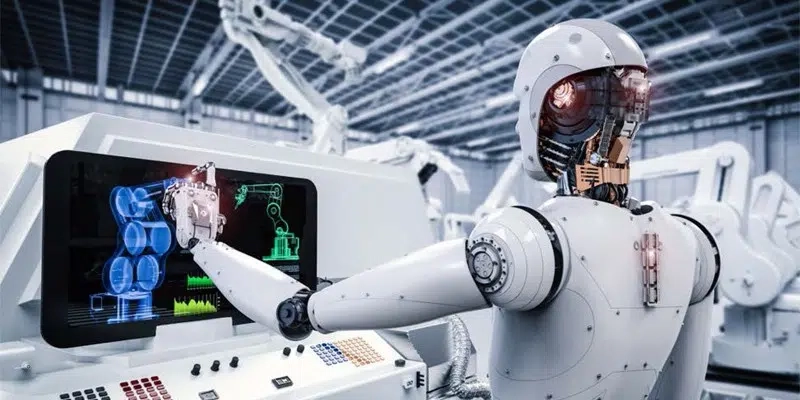Introduction:
In the face of the rise of artificial intelligence and computer vision has become a critical part of applying the technology to everyday problems. Computer vision robotics is one of the most used AI techniques to improve human performance.
In this blog post, we’ll explore the current state of computer vision robotics, including its existing applications and future direction. We’ll also discuss recent advances in automated AI projects and what future holds for this advanced technology.
What are computer vision and AI?
It is important to remember that computer vision is different from artificial intelligence. They are not the same kind of technology, even though they aim to make our lives simpler and more accessible. In the field of computer science known as artificial intelligence, robots display behavior that seems to imitate human intellect.
This entails making choices based on how we humans would evaluate a situation, picking up the language, conversing with people and other robots, and even coming up with original solutions to issues.
Meanwhile, computer vision enables computers to observe their surroundings. In this case, artificial intelligence (AI) advances in image processing software, a task that computers are already capable of performing.
The Impact of Computer Vision on the World
Across many sectors, computer vision self driving cars is improving the convenience and ease of our lives. Giving mobile devices the capacity to detect products based solely on photos will facilitate more efficient buying experiences in the retail sector.
It is used in medicine to evaluate X-rays, MRIs, and other medical imaging, giving a computer’s perspective on information that would otherwise be unattainable. Self-driving cars like Tesla actively exploit computer vision to enhance current sensors to ensure a safe and effective trip.
Here are some of the most innovative uses of computer vision that I discovered after a few days of pacing the floor.
Individualization
Future face recognition technology will significantly improve bespoke automobile settings. The Panasonic Chrysler Portal concept car has cameras outside and behind the steering wheel that utilizes computer vision to identify the driver as soon as they approach the vehicle and update music selections, sitting position, temperature, and other information.
Interfaces
Eye-tracking technology driven by computer vision has expanded beyond gaming laptops into consumer and commercial PCs, giving users who are unable to use their hand’s control.
Autonomous vehicles
The automobile industry is where computer vision is used most prominently since it is one of the key enabling technologies for wholly and partially autonomous vehicles. With the NVIDIA Drive PX 2, a self-driving car reference platform that “Tesla, Volvo, Audi, BMW”, and Mercedes-Benz are already using for semi- and fully autonomous functions, NVIDIA, which already assisted in supercharging the profound learning revolution with its deep learning GPU tools, is powering many of the independent car innovations.
Furthermore, not only the driver is “known,” but also the passengers, who may have their face-recognition-enabled customization settings for things like seating, temperature, and even noise-canceling “cocoons” that play their preferred music.
Equipment
An aftermarket camera and app that uses image recognition to alert you when you’re running low on certain items can be retrofitted into your old refrigerator, which is truly game-changing. Expensive refrigerator cams that show you video footage of what’s in your refrigerator aren’t that revolutionary.
What does the Future hold for technology?
A fast-expanding topic in both studies and applications in computer vision. Research developments in computer vision are increasingly more quickly and directly applied to industry.
AI engineers use computer vision technologies to recognize, categorize, and even respond to things in real time. Typical tasks include image categorization, face identification, position estimation, and optical flow. Programming computer vision algorithms to carry out these tasks is the responsibility of computer vision engineers.
Conclusion: Computer Vision Technologies in Robotics
The development of computer vision technology is continuing as AI becomes more pervasive in our daily lives. Due to developments in cloud computing, Auto ML pipelines, transformers, mobile-focused DL libraries, and mobile computer vision applications, as this technology scales, there will be an increased need for experts in computer vision systems.
In 2022, as augmented and virtual reality (VR) applications advance, computer vision developers can expand their expertise into new fields, such as creating simple, effective ways to replicate and interact with physical things in a 3D environment. In the future, computer vision robotics applications will likely continue to develop and have an impact.
This post is originally published at click here


